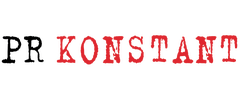Automotive Testing Expo Europe 2010: Huber Group presents results in the field of "Virtual Sensors" / Winner of the 2010 Industry Award / Further focal point is the development, testing and product portfolio of emission reduction components and systems
The Huber Group, represented by the Huber Automotive AG, will be exhibiting at the Automotive Testing Expo 2010 on 22nd, 23rd and 24th June 2010, in Hall 1, Stand 1848 at the New Trade Fair Centre in Stuttgart. This year the TIER-1 supplier and development service provider presents the possible applications of neural networks, mainly within the framework of selective catalytic reduction (SCR). All conceivable sensors can be substituted by a neural network or by integrating trained neural networking into an electronic control unit. It will now even be possible to determine those raw emissions virtually, which until now could not be measured. The Huber Group won the 2010 Industry Award for its advancement in „Virtual Sensors“.
The international TIER-1 supplier to automotive and engine manufacturers will present its research results in the virtual sensors sector to the specialist audience at the trade fair. There is a high correlation between the comparison of existing measurements of the NOx mass flow of a vehicle and the calculated measurements of a trained neural network in NOx sensor substitution. The greater the significance of the input variables made available to the neural networks the higher is the precision with which the emissions performance can be learned with respect to NOx. The same principle can basically be applied to all emission sensors. This function of a „Virtual Raw Emission Sensor“ (VRES) is planned as a software function model in the very near future and can be implemented as „object code“ in existing software architecture.
The Huber Group will also be providing the interested visitor to the trade fair with a detailed insight into the Huber Group’s extensive development, testing and product portfolio including emission reduction components and systems for combustion engine and alternative drives. Visitors will also find control units, which have been both developed and produced by Huber Group, as well as tools and components that conduct airflow and emissions such as actuators, sensors, intake modules and emission components. Diagnostic tools such as the ODX diagnostic tester, which round off the complete package, will also be on display on the Huber Group stand.
Press information on the topic of neural networks can be found by clicking on the following link: http://www.konstant.de/index.php?id=1526
